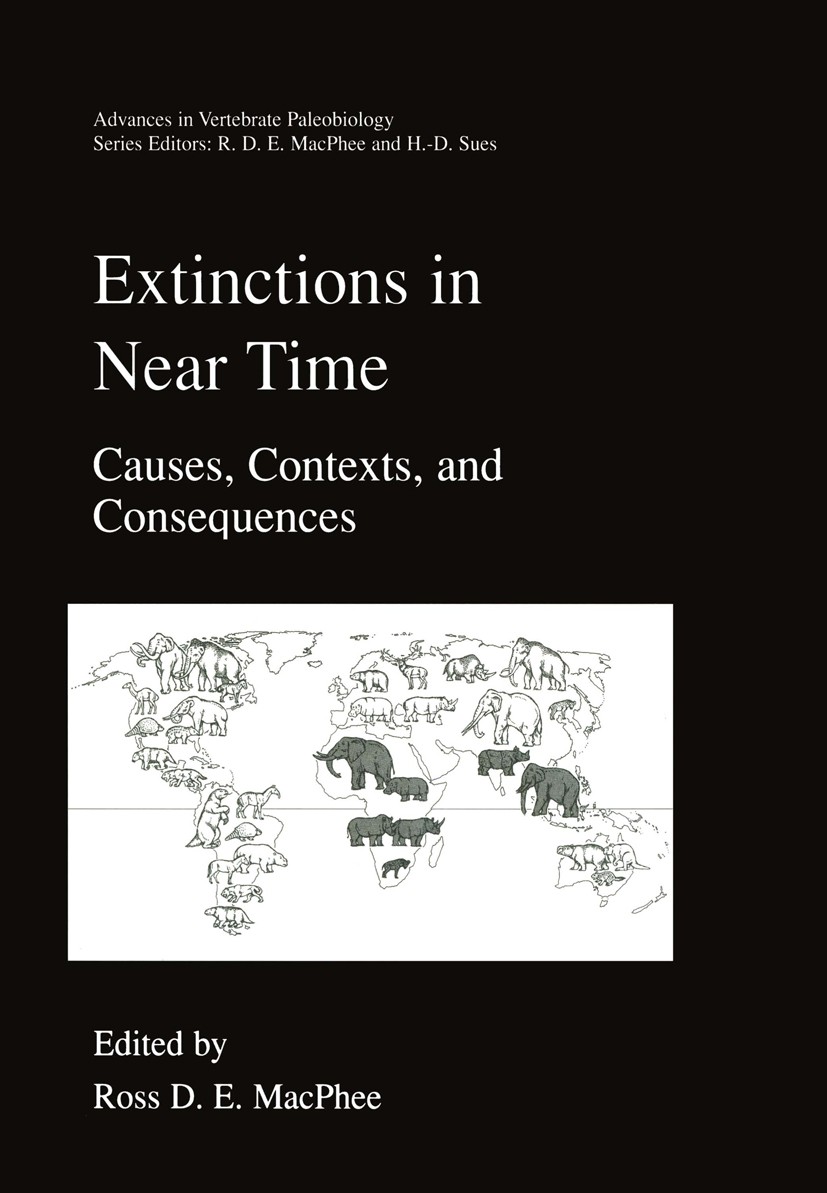| 书目名称 | Extinctions in Near Time | | 副标题 | Causes, Contexts, an | | 编辑 | Ross D. E. MacPhee | | 视频video | http://file.papertrans.cn/320/319920/319920.mp4 | | 丛书名称 | Advances in Vertebrate Paleobiology | | 图书封面 |  | | 描述 | "Near time" -an interval that spans the last 100,000 years or so of earth history-qualifies as a remarkable period for many reasons. From an anthropocentric point of view, the out standing feature of near time is the fact that the evolution, cultural diversification, and glob al spread of Homo sapiens have all occurred within it. From a wider biological perspective, however, the hallmark of near time is better conceived of as being one of enduring, repeat ed loss. The point is important. Despite the sense of uniqueness implicit in phrases like "the biodiversity crisis," meant to convey the notion that the present bout of extinctions is by far the worst endured in recent times, substantial losses have occurred throughout near time. In the majority of cases, these losses occurred when, and only when, people began to ex pand across areas that had never before experienced their presence. Although the explana tion for these correlations in time and space may seem obvious, it is one thing to rhetori cally observe that there is a connection between humans and recent extinctions, and quite another to demonstrate it scientifically. How should this be done? Traditionally, the study of | | 出版日期 | Book 1999 | | 关键词 | Homo sapiens; Mammoth; Vor- und Frühgeschichte; biodiversity; landscape | | 版次 | 1 | | doi | https://doi.org/10.1007/978-1-4757-5202-1 | | isbn_softcover | 978-1-4419-3315-7 | | isbn_ebook | 978-1-4757-5202-1 | | copyright | Springer Science+Business Media New York 1999 |
The information of publication is updating

|
|
 |Archiver|手机版|小黑屋|
派博传思国际
( 京公网安备110108008328)
GMT+8, 2025-12-27 16:09
|Archiver|手机版|小黑屋|
派博传思国际
( 京公网安备110108008328)
GMT+8, 2025-12-27 16:09


